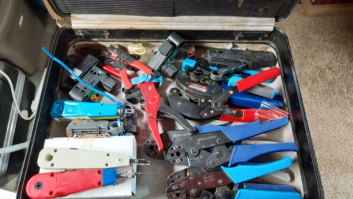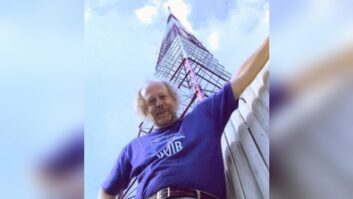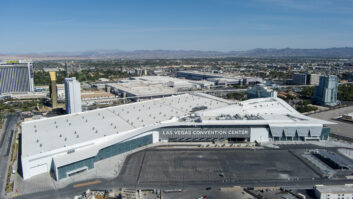Oy, those organizations that profess to honor top radio people but neglect the technical folks.
Announcements typically go something like this: “We salute our employees, who are leaders in every niche of radio: general management, programming AND sales.” What message does such wording send to an engineer, an IT professional or a new media technologist about how top management views them?
Let me salute a handful of organizations doing things right.
First up is Entercom Communications, one of the few that take the time to put out even occasional press releases about engineers.
I received such a release a while back when it named Dan Pregnar DOE for its four stations in Wilkes-Barre/Scranton, Pa.
The press release consists of exactly 161 words. A PR professional could write something like that in her sleep and click “Send” without moving off her pillow.
So why do so many other radio broadcast companies — who can crank out announcements ad nauseum about new air talent and their hires of general sales managers — find it so hard to do the same for technical staff? Answer: They just don’t think about it. Which is telling.
Kudos to Entercom. Keep it up.
Hall of Famers
Second cherry goes not to a company but to the Michigan Association of Broadcasters, which inducted Larry Estlack, its director of technology, into its Broadcasting Hall of Fame.
Imagine, choosing an engineer for your hall of fame — and someone who made his mark at least a few years after Marconi, no less.
“Larry began working in Michigan broadcasting operations in 1970, and has been involved in just about every area of broadcasting from engineering to programming,” the organization announced.
“Larry has been the chief engineer at several radio and television stations in Michigan and is widely respected as an engineering consultant. He was named MAB Engineer of the Year in 1997.” He also has been the Michigan chairperson of the Emergency Alert System since 1985 and a teacher at Michigan State University.
But wait. There’s more! I have to rub my eyes, but another state organization is honoring a techie.
When this year’s class of the Richard M. Fairbanks Indiana Broadcast Pioneers Hall of Fame is inducted next month, bumping elbows with other big shots will be Jerry Arnold, director of engineering at Midwest Radio in Terre Haute.
A former radio newsman, he has written in Radio World and other publications. He once invented and manufactured an interface for satellite-delivered programming to work with radio automation; and he is active in his local community.
(click thumbnail)Jerry Arnold
The Indiana Broadcasters Association called him one of the “native or adopted Hoosiers who, through their chosen radio and/or television careers, have had significant and historic impact on their communities, state and world.”
Still missing
By contrast, a qualified raspberry goes to Beasley Broadcast Group, an outstanding broadcast company in so many respects, which again announced winners of its Annual Operating Awards. It named a company-wide GM of the year, two PDs of the year, sales manager of the year, even a business manager of the year.
Guess which job title was missing again?
I e-mailed President and COO Bruce Beasley to ask: Why no engineers? He wrote back, “That’s a very good question because we have some of the best engineers in the industry in our company.”
Recall that in September 2005, Radio World criticized Beasley in a back-page editorial for not including engineers in its awards (that year we also saluted Clear Channel for launching an award just for engineers).
Chairman/CEO George Beasley wrote to me then in a letter we published, saying the company was grateful for the reminder: “Not a day goes by that we don’t appreciate their hard work and what it means to the future of our company,” he stated. “Nor are we shy about vocalizing that appreciation to fellow employees, advertisers and investors.”
I believe he was sincere but I would like to see a technical person on that annual award list when the broadcast group honors its top people next summer. You can’t approach 50 years as a top broadcaster without serious tech help.
To its credit, Beasley did issue a press release about hiring Michael Cooney as its VP and CTO a year ago; thus my qualification on the raspberry. Let’s give credit where ’tis due.
If you run a radio group or a broadcast association, do you give out awards? Do you issue press releases about star radio people? If so, do you include engineers and related tech fields?
Why not?
* * *
I mentioned Jerry Arnold. He’s had an interesting career. It dates to 1967 when he was hired at KIEV(AM) in Glendale, Calif., during high school. He spliced tape, swept the floor and ran the board.
Graduating from the University of California, he took a year off to play pro baseball (lucky dog). Broadcast stops included Bishop, Calif., in the Sierra Nevada Mountains at KIBS(AM), where he was evening disc jockey, news and sports man and fill-in engineer.
He moved to Indiana to do radio news at WILO (AM/FM) Frankfort, where he says he put in many 100-hour work weeks helping build that station’s news reputation.
Rep. John Myers helped convince Jerry to take the position of news director at WAAC(AM) in Terre Haute, where it enjoyed ratings success; he interviewed presidential candidate Ronald Reagan in 1980. He worked at WTHI(AM/FM), helping improve the AM format, and did live boxing coverage (boxing?!) at WTHC(FM), calling called the 1999 knockout that gave Terry Ray the WBF Cruiserweight title.
Jerry founded an old-time radio re-creation group and he is on a committee trying to bring minor league ball back to Terre Haute. He also writes to me when he sees something he likes or doesn’t like, keeping us honest. My favorite kind of reader.
Oh and he keeps four stations on the air.
Congratulations on the honor bestowed by your state’s broadcasters, Jerry.
* * *
On another topic, I’m pleased to see NAB taking a higher profile in technology advocacy through its NAB FASTROAD initiative.
The electronic program guide project is an example of the kind of benefits radio can accrue. (FASTROAD stands for Flexible Advanced Services for Television & Radio On All Devices. Not the smoothest name to get your tongue around, but an effective acronym.)
The goal of this particular project is to lay out a framework for HD Radio-based EPG services, similar to what’s done with DAB elsewhere in the world. NAB’s leaders deserve credit for funding it and for other recent efforts on the technology side, such as their role in the embedded exporter initiative.
An EPG could give consumers more informed choice among programming. As David Maxson, a member of the team working for NAB, told me in the spring, an EPG could enhance the “stickiness” of terrestrial radio in the face of media choices and eventually support time-shifting of programming.
It might not rise to the level of a “killer app” but its supporters feel an EPG could in fact encourage other such apps and further help HD Radio receiver penetration.













